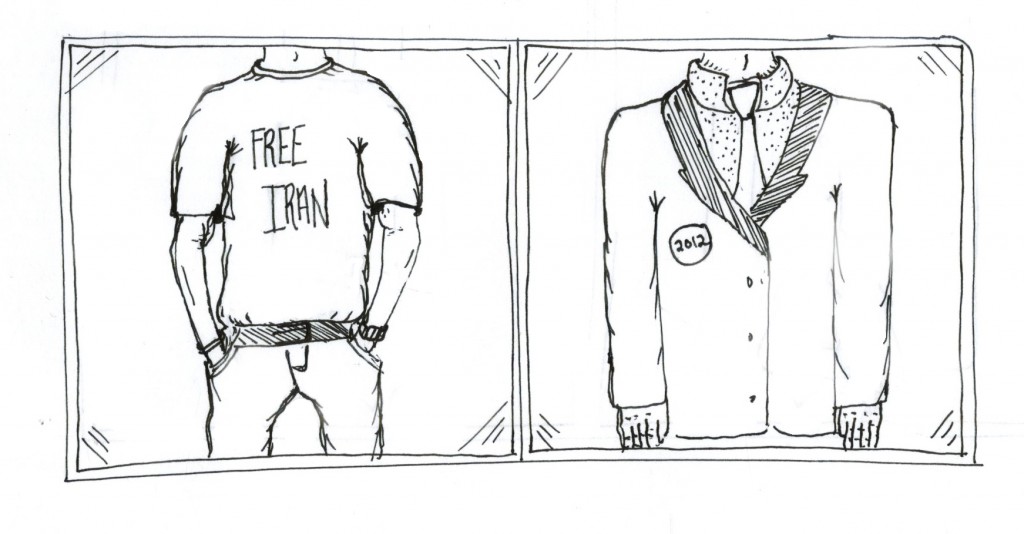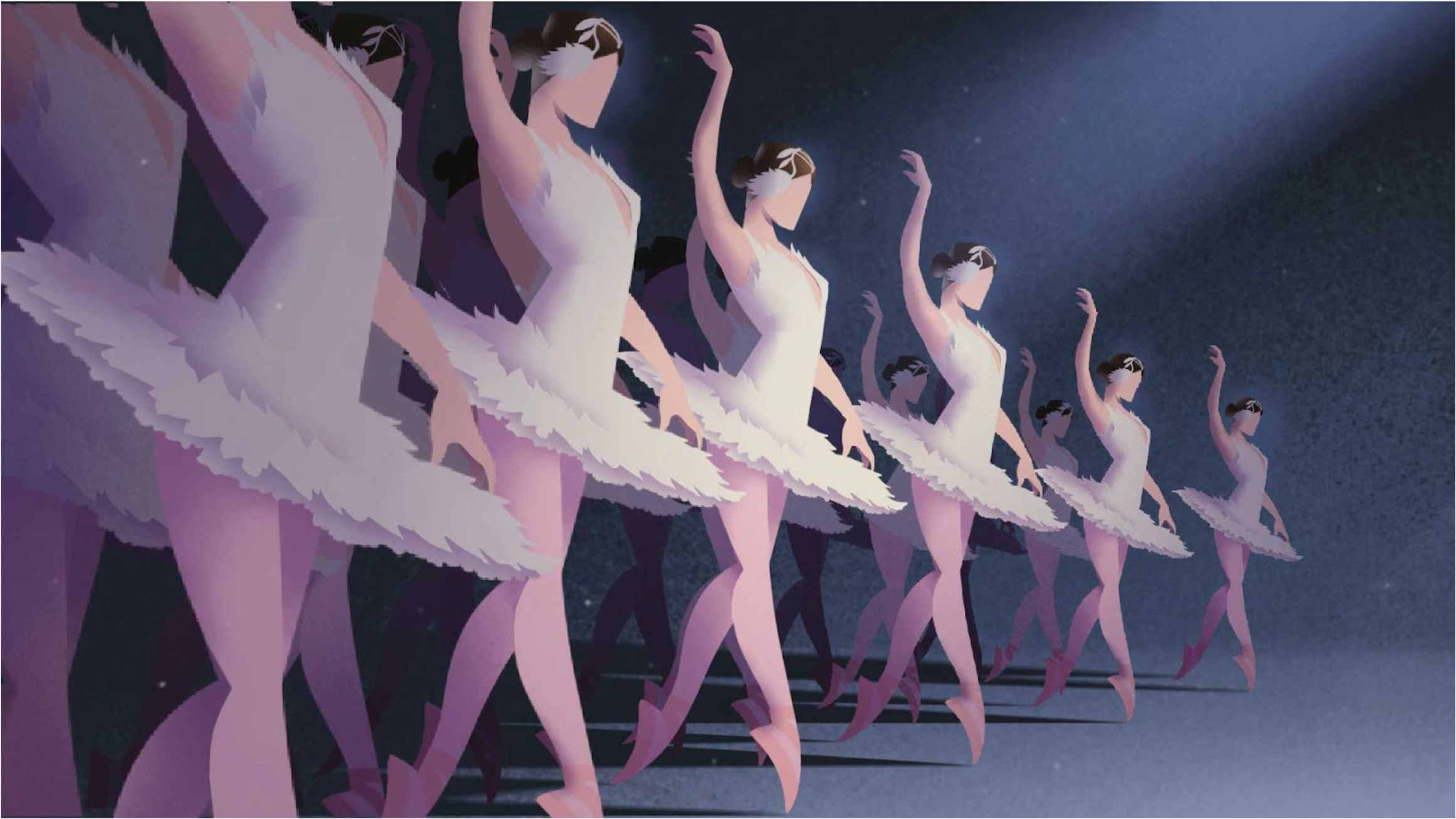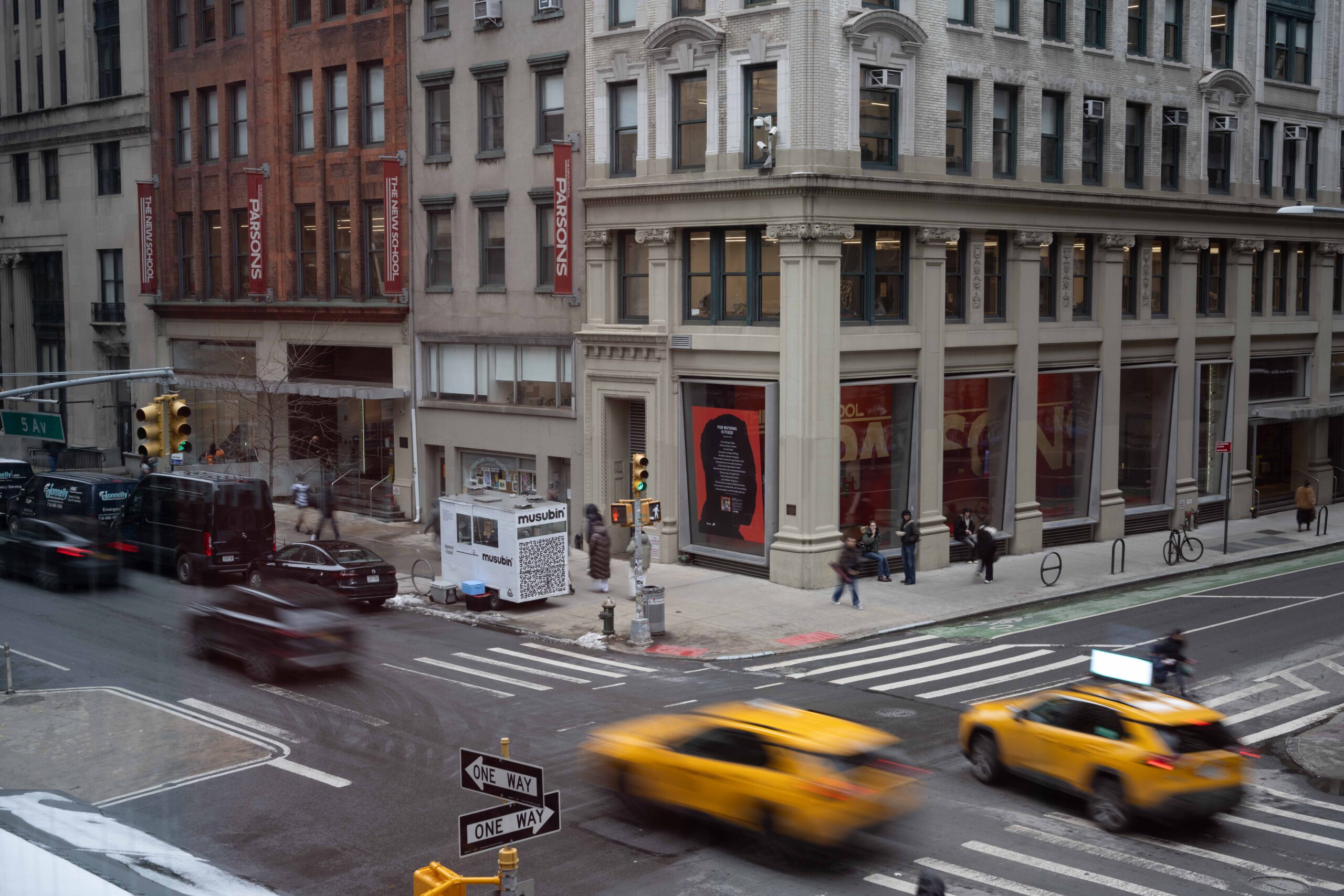Politics and fashion make an odd couple, as politicians are typically not very fashionable, and the politics of the fashion world range from dubious to doubtful.

Their relationship does not seem to be based on mutual affection, either: the fashion industry loudly (and proudly) emphasizes its apoliticalness and most designers, though surely public figures with considerable influence, are seldom heard trumpeting political slogans. (And if they do, they don’t get very far, eh Galliano?) Meanwhile, politicians refrain from discussing their outfits, suggesting that the theater of fur and fabrics is not a particularly urgent matter. This clear distinction is common knowledge, but betrays the fact that politics and fashion have built a tight-knit relationship beyond logo shirts and party-related color codes. With a shameless enthusiasm that became apparent in the highly stylized Obama campaign, the alleged opponents use each other — and hence are one step ahead of the blissfully unaware voter.
One of the few openly acknowledged ties is the First Ladies’ fondness of fashion. Fulfilling a role as the wife of in an area traditionally dominated by men, a First Lady is often considered pretty padding and consequently judged by her appearance. While this can be a living hell, it also presents the opportunity to attain fame when skillfully employed, as fashion icon Jackie O demonstrated. Based on the assumption that these women just happen to be married to politics, and are not politicians themselves, it appears acceptable for them to openly play with their clothing. What’s more, it is even expected. The media critically examined Michelle Obama’s Jason Wu dress at the 2009 inauguration, for example, and have commented on her clothing choices ever since (without mentioning her political background, of course). This gender-specific perception is expanded to include current female politicians as well. What else is there to say when retrospects of Hillary Clinton’s career include features about her most flattering pantsuits? And these female politicians seem aware of fashion’s importance — former hockey mom Sarah Palin surely had her reasons to undergo a $150,000 makeover during the 2008 presidential campaign.
Their male counterparts, on the other hand, are a completely different matter. Ideally, we expect politicians to care about state matters and be above the fascination with looks. In reality, though, most legislators seem to take considerable pleasure in dressing up, effectively using clothing as a public relations tool and, in concreto, for manipulation. In an attempt to not only promote a political agenda (if there is any), but more so themselves, many world leaders have contrived an elaborate system of style, highlighting professional skill (clean style = clean decisions), class association (jeans as evidence of being down-to-earth) and regional affiliation (remember Bush’s cowboy attire?). This “personal style” is really a well-calculated presentation of stereotypes — Obama in gym shoes certainly appears fit enough to run the country, no? However, this matter is hardly ever addressed in public or the media. Except for a recent reference to Mitt Romney’s peculiar hairstyle, The New York Times refrains from discussing fashion outside the comfortably narrow realms of the Style section.
The fact is, though, that politics have always been dependent on style to arouse a certain sense of community. The men of the French Revolution did not define themselves as sans-culottes for no reason — they wanted everyone to know that, unlike the country’s elite, they did not, in fact, have silk knee-breeches. Garments as a sign of class distinction are by no means a new phenomenon, and political movements tend to establish themselves through a certain aesthetic (speaking of, any fancy ideas for OWS?). In this sense, politicians need fashion — they just don’t like to admit it. And the problem is that, for the most part, we don’t want to admit it either.
It’s partially our own fault that politicians are able to successfully win sympathy by dressing up — we are willfully ignorant. Stubbornly clinging to gender-specific expectations, we often choose to keep politics and fashion apart in our heads. But if fashion does have considerable influence, we should be willing to read political messages inscribed in aesthetics, and be aware of how aesthetic pleasure might change our personal preference of a specific candidate. It isn’t enough to consider what politicians are wearing; we also need to determine to what effect, so votes are not cast based on a clean, white Chanel vest. This effort to decode must come from ourselves. But as we tend to make assumptions based on appearance, professional help from the media is key. Admittedly, the media has been tackling the fashion issue more prominently since the 2008 elections, but their coverage is often informed by political bias. While Palin’s shopping spree was widely addressed and criticized, Clinton’s style is only discussed in special interest magazines with price tags underneath some pretty pictures.
Of course, it would also help if, instead of concealing their mutual affinity, the political world and the fashion world tried some good old honesty. Just do it like Bill Clinton who, with his penchant for Brooks Brothers, is clearly at home in both spheres: save your reputation and make your affair public.







Leave a Reply